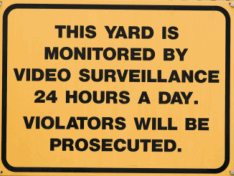 Without any intention to sound like a broken record... there is yet more data indicating how critical it is for medical practices to have a solid patient collection process in place. A new survey indicates that health savings accounts are growing in popularity. Both the number of accounts and the amount of money in those accounts are growing at a significant rate. A recent study from Celent, a consulting company that works with banks, showed that the number of HSAs increased 46.1 percent between January 2008 and January 2009, and the money in HAS accounts grew by 62.6 percent. HSA accounts have an average account balance of $1,561. This number is likely significantly understated because most banks do not consistently purge inactive, zero-balance accounts.
Without any intention to sound like a broken record... there is yet more data indicating how critical it is for medical practices to have a solid patient collection process in place. A new survey indicates that health savings accounts are growing in popularity. Both the number of accounts and the amount of money in those accounts are growing at a significant rate. A recent study from Celent, a consulting company that works with banks, showed that the number of HSAs increased 46.1 percent between January 2008 and January 2009, and the money in HAS accounts grew by 62.6 percent. HSA accounts have an average account balance of $1,561. This number is likely significantly understated because most banks do not consistently purge inactive, zero-balance accounts.
What does this mean for medical practices? It means that they need have a solid set of tools, processes and policies in place for collecting the portion of their income that is the patient's responsibility. Some of the key elements of a world-class patient collections process are:
- A clearly communicated patient collection policy that is consistently communicated to patients before they see the doctor;
- An automated insurance verification tool that allows the front-desk to easily verify coverage and confirms the key parameters of the coverage (deductible, co-insurance percentage, and the amount of the deductible met for the current year);
- An easily used tool that allows the front-desk to inform the patient before he leaves the office how much he will likely owe after the claim is adjudicated. This allows patient to pay their portion of the healthcare bill before they ever leave the office;
- Quick claim submission and follow-up so that patients that have not paid their bill before leaving the office can be sent a patient statement as quickly as possible after the date of service;
- Well designed patient statements that eliminate many of the issues that cause patients to treat bills from physicians differently than they treat credit card or utility bills;
- Payment processing tools that automate and monitor payment plans; and
- A system for ranking patient balances for follow-up effort based upon expected collections - not simply on the magnitude of the patient balance.
If you medical practices has not invested in developing a world-class patient collection process then you are likely losing at least 10% of your practice's potential revenue.
_____________
Copyright 2009 by Carl Mays II. Carl is President and CEO of ClaimCare Medical Billing Service, one of the largest medical billing companies in the United States.

 Like many of you, I am continuing to discover that more and more business is being conducted over the Internet and, specifically, by way of e-mail. When I first began speaking professionally, I never imagined I would ever book engagements without communicating with the meeting planner on the telephone and through traditional mail. Along came the popularity of the fax, which changed procedures somewhat, but nothing like the changes instigated by the Internet explosion about 10 years ago that began noticeably affecting the manner in which my speaking engagements were booked and continues to become more common.
Like many of you, I am continuing to discover that more and more business is being conducted over the Internet and, specifically, by way of e-mail. When I first began speaking professionally, I never imagined I would ever book engagements without communicating with the meeting planner on the telephone and through traditional mail. Along came the popularity of the fax, which changed procedures somewhat, but nothing like the changes instigated by the Internet explosion about 10 years ago that began noticeably affecting the manner in which my speaking engagements were booked and continues to become more common.

 Since I refer to Dale Evans Rogers in today's column, I guess I had better mention for my younger readers that she was once widely-known as "Queen of the Cowgirls" and teamed up with "King of the Cowboys" Roy Rogers to entertain many kids, including me, with movies and television shows. After hanging up her spurs, she became a much-in-demand inspirational speaker and writer. She passed away at the age of 88 in 2001, preceded in death by her husband Roy in 1998.
Since I refer to Dale Evans Rogers in today's column, I guess I had better mention for my younger readers that she was once widely-known as "Queen of the Cowgirls" and teamed up with "King of the Cowboys" Roy Rogers to entertain many kids, including me, with movies and television shows. After hanging up her spurs, she became a much-in-demand inspirational speaker and writer. She passed away at the age of 88 in 2001, preceded in death by her husband Roy in 1998.
 In my last post I outlined why yields are important and how to calculate them. In this article I want to follow up with a few more tactical points concerning medical billing yields:
In my last post I outlined why yields are important and how to calculate them. In this article I want to follow up with a few more tactical points concerning medical billing yields:
 I am taking a brief respite from the previously mentioned outline for the series of posts on allowables and fee schedules to mention a key point about allowables - they are often ignored by insurance companies. If you are not systematically comparing your payments to your contracted allowables you are losing thousands of dollars. Most likely, your revenue is 7% lower than it should be - that is right 7%!
I am taking a brief respite from the previously mentioned outline for the series of posts on allowables and fee schedules to mention a key point about allowables - they are often ignored by insurance companies. If you are not systematically comparing your payments to your contracted allowables you are losing thousands of dollars. Most likely, your revenue is 7% lower than it should be - that is right 7%!
 There are many items that are confusing in the world of medical billing. One of the most confusing areas for individuals that are new to the business side of medicine is the idea of medical billing allowables. There are not many businesses where a bill is sent out for much more than one would expect to collect. In most business if you bill $100 then you expect to collect $100. In the business of medicine a bill for $100 is often sent out with the expectation that only $50, $30 or even less will be collected. Why?
There are many items that are confusing in the world of medical billing. One of the most confusing areas for individuals that are new to the business side of medicine is the idea of medical billing allowables. There are not many businesses where a bill is sent out for much more than one would expect to collect. In most business if you bill $100 then you expect to collect $100. In the business of medicine a bill for $100 is often sent out with the expectation that only $50, $30 or even less will be collected. Why?
 I have had several questions submitted about how to design a good medical billing bonus system. To help folks that are considering implementing such a system I thought I would share a few key elements of any good billing bonus system. An effective medical billing bonus system is...
I have had several questions submitted about how to design a good medical billing bonus system. To help folks that are considering implementing such a system I thought I would share a few key elements of any good billing bonus system. An effective medical billing bonus system is...